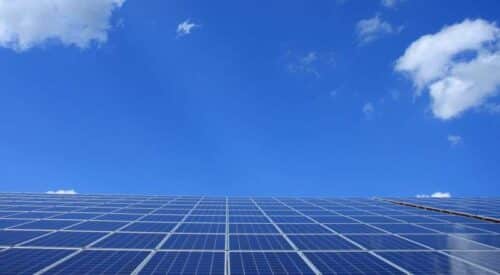Researchers at the University of Toronto and the University of Kentucky have improved the stability of perovskite solar cells using fluorinated aniliniums, enhancing efficiency and durability.

Perovskite solar cells (PSCs) have attracted significant interest due to their impressive power-conversion efficiencies and cost-effective solution processing. Nevertheless, maintaining their stability under elevated temperatures has posed a considerable obstacle. The interfaces between the various layers of PSCs are vulnerable to degradation, resulting in energy losses and diminished overall performance.
Researchers at the University of Toronto and the University of Kentucky have found an approach to mitigate degradation in PSCs under high-temperature conditions. They have discovered that incorporating fluorinated aniliniums, a group of compounds commonly employed in pharmaceuticals, agrochemicals, and materials science, can effectively reduce the detrimental effects experienced by PSCs.
Enhanced PSC Stability with Fluorinated Aniliniums
The researchers have incorporated Fluorinated aniliniums during interfacial passivation in PSC fabrication, enhancing stability and performance. Passivation minimizes defects, reduces recombination, and improves efficiency. The addition of fluorinated aniliniums improved PSC stability by preventing progressive ligand intercalation. This halted the continuous penetration of ligand molecules between perovskite layers, preserving crystal integrity and preventing degradation, thus maintaining optimal PSC performance.
Remarkable Inverted PSC Endurance
Using this approach, the scientists accomplished a certified quasi-steady-state power-conversion efficiency of 24.09% for inverted-structure PSCs. During testing, an encapsulated PSC housed in a protective enclosure performed remarkably by operating at maximum power generation for 1560 hours (~65 days). This exceptional performance was observed under challenging conditions of a temperature of 85°C, 50% relative humidity, and 1-sun illumination, representing the typical sunlight intensity during normal, clear-sky conditions at noon. The device maintained its functionality and efficiency throughout the testing period, demonstrating its remarkable endurance and reliability.
This study represents a significant advancement in PSC stability, providing a promising solution to enhance these solar cells’ performance, durability, and reliability in high-temperature settings. The findings bring us closer to the widespread adoption of this good photovoltaic technology at a terawatt scale, offering immense potential for sustainable energy generation.
Reference: So Min Park et al, Engineering ligand reactivity enables high-temperature operation of stable perovskite solar cells, Science (2023). DOI: 10.1126/science.adi4107. www.science.org/doi/10.1126/science.adi4107






